Watching birds landing is truly incredible. They create beautiful shapes with their wings and tails and make the whole process look so absurdly easy. But what exactly is going on when a bird lands?
Birds land by first decreasing their airspeed. This is done by lowering their tail and the rear edge of their wings, creating drag that slows them down. They essentially stall or cease moving forward just before landing. Birds with webbed feet also stretch them out to provide additional drag.
There are subtle differences in the way birds land depending on what surface they are landing on. Read on to discover more about the amazing techniques birds use to bring themselves in for a nice, soft landing.
As an Amazon Associate, I earn from qualifying purchases. Birdwatch World earns commissions from Amazon and similar affiliate programs from any purchases made via links in this article.
How Does A Bird Slow Down To Land?
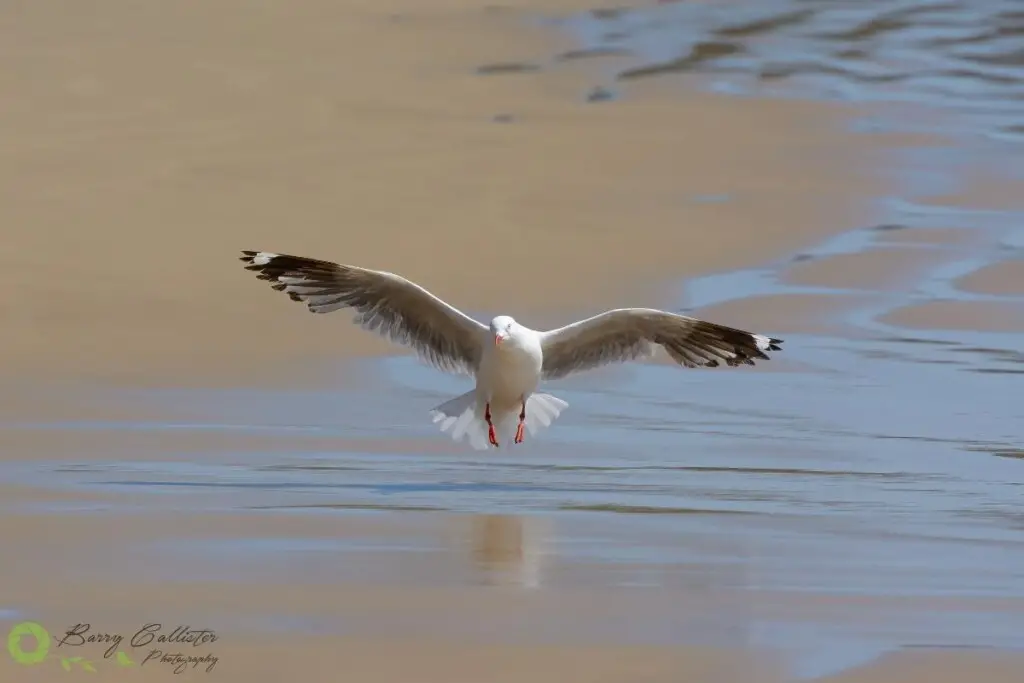
Birds slow down to land using their wings and tail feathers like a parachute. They drop the bottom of their wings and tails toward the ground creating more surface area. They spread their feathers out to catch more air also. All this feather surface pushes against the air ahead, slowing them down.
In the image above of the Silver Gull landing, you can see how the bird has its feathers spread out as much as possible. It is pointing a larger surface area of its tail and wings at the air in front of it. This creates the drag that slows it down.
The bird eventually slows down enough for gravity to do its job and pull the bird to the ground.

Why do little birds attack big birds in flight? Find out in this post here on my blog.
How Do Perching Birds Land?
Perching birds that do not have webbed feet have an extra thing to worry about when landing. They also have to make sure they get a firm grip on the branch or whatever it is they are landing on.
This adds an extra degree of difficulty to landing, however, they manage to handle it with ease.
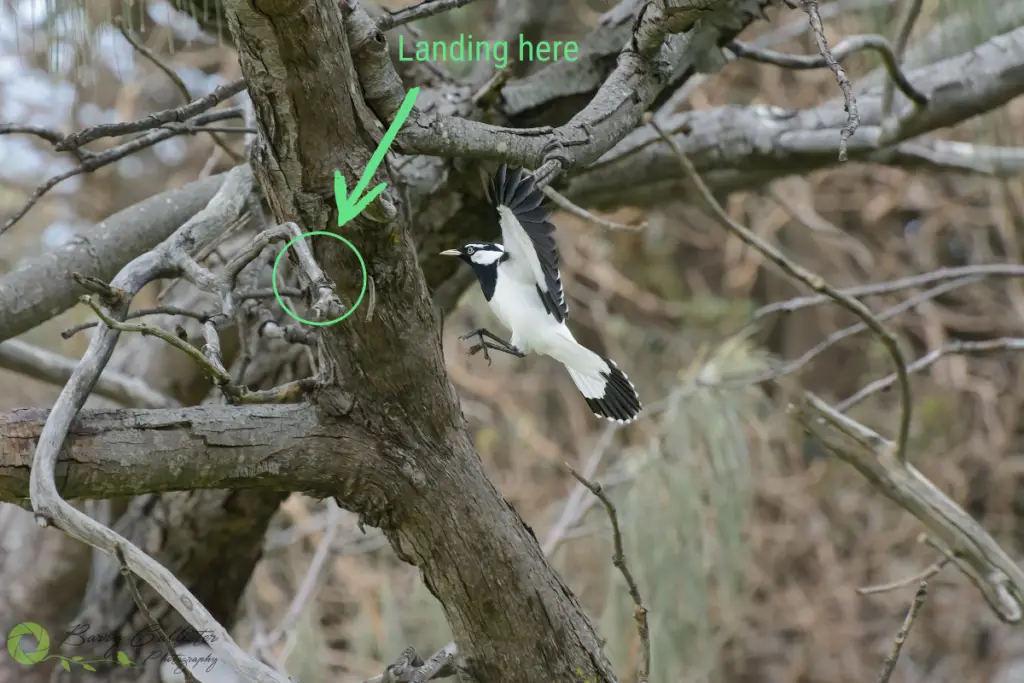
Just like the silver gull, clawed birds like the magpie lark above will spread their feathers and tail to create drag and slow down.
An extra thing birds of this type will do is stretch their feet out towards the perch they are about to land on. This serves two purposes; firstly it prepares their claws to grab hold of the perch, secondly, it pulls their tail down and forward, creating even more drag.
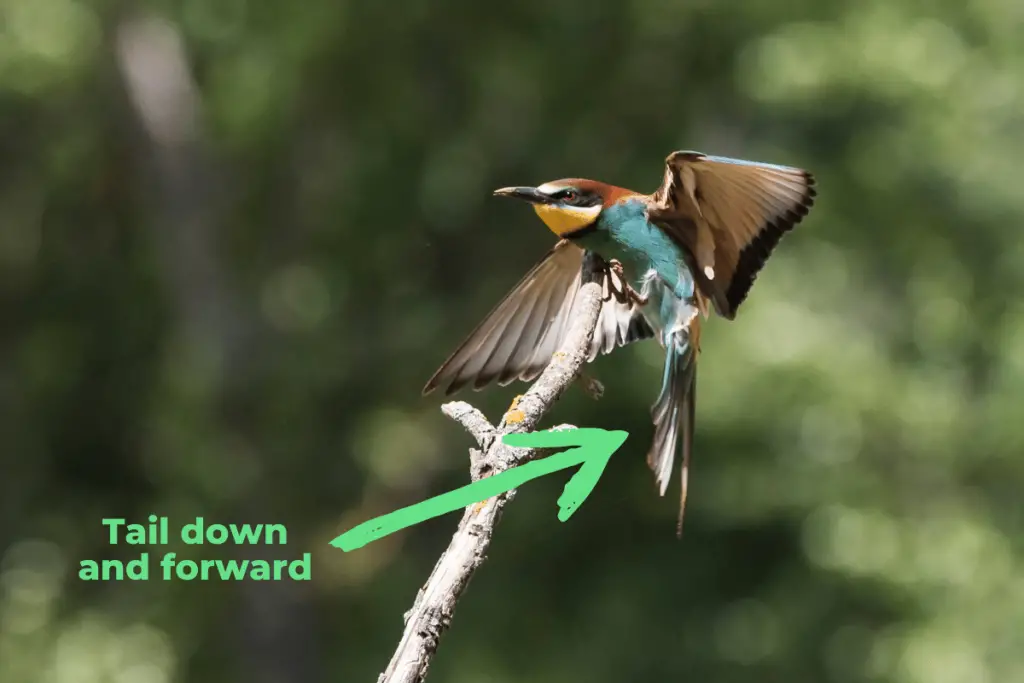
When it comes to finally landing and gripping the perch, birds like the European bee-eater and magpie lark will do something completely mind-blowing. They will adjust their grip and the way they grip depending on the type of surface they are landing on.
Researching how birds land
Researchers at Stanford University in San Francisco studied the techniques birds with clawed feet use to land. They used perches made from various materials in their testing such as tree branches, foam, and Teflon to observe how birds adjust their landings depending on the surface they land upon.

Are small birds smart? You will find out in this article here on the blog.
Astonishingly, they found that birds will exert the same amount of force with their legs no matter what type of surface they are landing on. What changes is how hard they grip with their feet and claws, and how much they extend their claws.
Watch this video from Stanford University to learn more about this study:
How Do Waterbirds Land?
Waterbirds, especially larger ones like swans and pelicans, have a different landing technique again.
Waterbirds land by spreading their wings, tails, and webbed feet while still in the air to create drag to slow their flight speed. This slows them enough to drop down to the water’s surface. They then use their feet like skis on the surface, using the friction created to bring them to a stop.
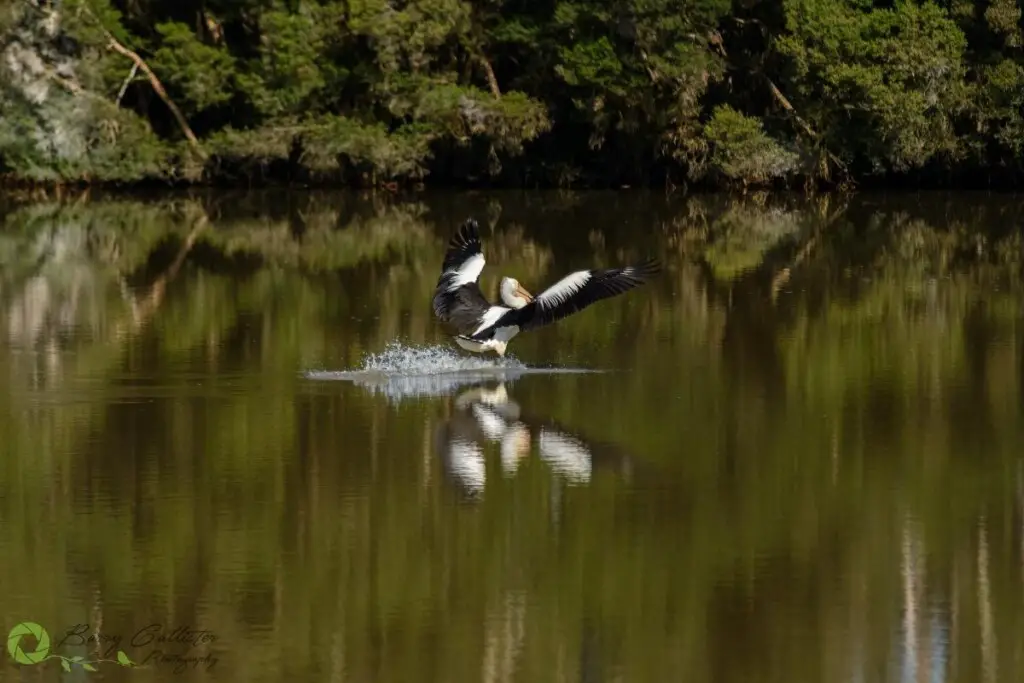
Trumpeter Swans are the heaviest flying waterfowl on the planet. A male bird can tip the scales at almost 12 kg (26.5 lbs). That’s a lot of weight to get into the air?!
Birds of this size can’t slow too much before landing as they would simply drop from the sky due to their weight. They can’t land on solid ground for this very reason. This is why they land on the water and ski to a stop.
You can see this technique in action in the video below and how it sometimes almost results in collisions:
Discover the remarkable ways in which birds find water in this article here on my site.
Seabirds That Probably Should Land On Water
There are some seabirds that did not get the memo that landing on water is a better idea. Thankfully for us, it provides some great video entertainment.
Albatrosses are what are called pelagic birds, spending most of their time out at sea and only coming to land to breed.
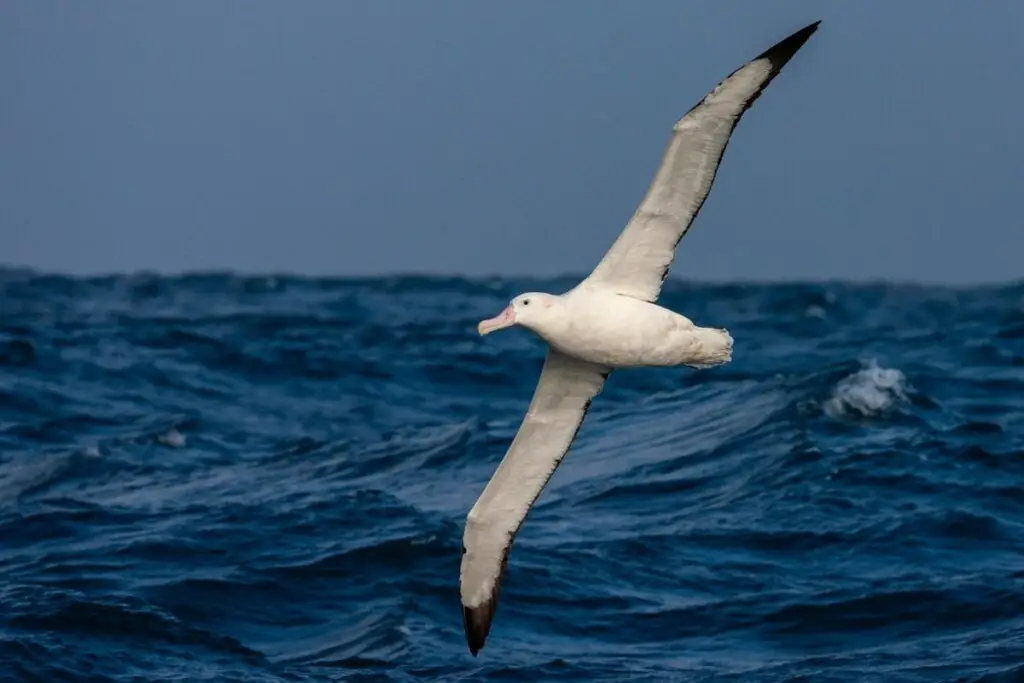
Consider the Wandering Albatross above which has the largest wingspan of any bird on earth at 107–135 cm (3.5-4.4 ft) and weighs up to 11.9 kg (26.2 lbs). That is a lot of bulk and weight to try and bring to a stop on solid ground.
Albatross need a long runway to get off the ground and into the air in the first place. They will land using these same runways.
An albatross will put the air brakes on like any other bird, using its large webbed feet as extra air resistance. As they get closer to the ground, they will start running in mid-air.
Occasionally, their airspeed is much faster than the speed at which they can run. This results in some spectacular crash landings, like the one below by a Northern Royal Albatross that went live to the world from New Zealand:
New bird species are still being discovered. Read all about it in this article on my blog.
Why Do Geese Flip Upside Down Before Landing?
Geese and Ducks have a technique that allows them to make a quick descent down to a pond or lake before landing. It is called whiffling.
They will tip from side to side with their wing feathers widely spread so air spills through the gaps created between them. This creates a sound that resembles tearing.
Some birds will even flip completely on their backs which cancels the airfoil effect of their wings and increases their momentum. This causes them to drop sharply toward the earth as you can see in this video:
This whiffling technique enables ducks and geese to drop sharply onto stretches of water that are quite small or perhaps crowded by trees.
Photos of Geese “flying upside down” have been shared on the internet. These images have simply been taken at just the right moment while the birds were whiffling. Naturally, birds cannot fly upside down.
Creepy Robot That Lands Like A Bird
Believe it or not, the researchers from earlier in the article who studied birds landing at Stanford University were doing so in order to develop a bird-like robot!
It is called the “stereotyped nature-inspired aerial grasper,” or SNAG. Attached to a quadcopter drone, this strange thing eerily resembles the legs, feet, and claws of a peregrine falcon.
The legs of SNAG operate independently. It has motors that act as muscles and even tendons made from fishing lines. Watching this robot in action is mind-blowing:
Birds have already been the inspiration for so much technology we use every day, such as airplanes, drones, and much more. Imagine the technology we can make in the future by studying animals such as birds.
References
- The amazing way birds land – birdwatchingdaily.com
- Stanford researchers decode how birds land with ease – Stanford on YouTube
- The Life Of Birds – David Attenborough
- Stanford engineers create perching bird-like robot – news.stanford.edu
